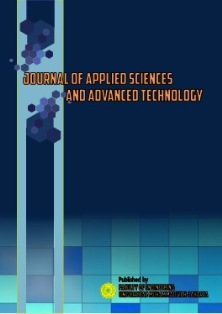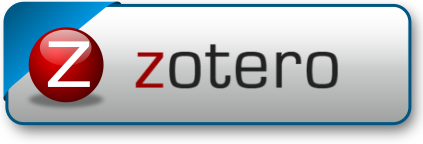Analysis of Pressure Vessel Design on Radiator Cooling System Using Low Carbon Steel Material
DOI:
https://doi.org/10.24853/jasat.3.3.81-90Keywords:
Hydro static test, Maximum allowable working pressure, Pressure vessels, Radiator cooling system, Working pressureAbstract
This study discusses the analysis of a pressure vessel's design in the Radiator Cooling 1000 (RC-1000) system, which operates at a design temperature of 100oC. A pressure vessel is a container of gaseous, solid, or liquid material subjected to internal or external pressure and can withstand various other load variations. The pressure vessel on the RC-1000 system has a diameter of 85.4 mm or 3.36 inches and will experience an internal pressure of about 143.7 kPa or 20.84 psi, so it must be designed safely. This research method uses analytical and experimental methods. The analytical method is used to calculate the thickness of the pressure vessel material, the maximum allowable working pressure, and the hydrostatic test calculation. While the experimental method was carried out on the hydrostatic test process, the evaluation was based on the prevailing regulations in the Republic of Indonesia. Using the SPCC-SD material (JIS 3141), it was found that the minimum thickness of this pressure vessel is 1.15 mm or 0.0452 inches on the shell side and 1.10 mm or 0.0434 inches on the head/dome side. The thickness of the material used on the shell side and head/dome is 1.2 mm or 0.0472 inches in practice. This pressure vessel has passed the hydrostatic test at 1600 kPa or 232.1 psi. The test pressure is given around seven psi higher because it makes it easier to read the scale on the pressure gauge.Downloads
References
S. T. Pasaribu, S. Sukarman, A. D. Shieddieque, and A. Abdulah, “Optimasi Parameter Proses Resistance Spot Welding pada Pengabungan Beda Material SPCC,” 2019, no. September.
E. Gunawan, S. Sukarman, A. D. Shieddieque, and C. Anwar, “Optimasi Parameter Proses Resistance Spot Welding pada Pengabungan Material SECC-AF,” no. September, 2019.
Y. A. Cengel, Introduction to Thermodinamics and Heat Treansfer, 2nd ed. McGraw-Hill, 2008.
Menteri Ketenagakerjaan Republik Indonesia, Peraturan Menteri Ketenagakerjaan Republik Indonesia Nomor 37 Tahun 2016 mengatur tentang keselamatan dan kesehatan kerja bejana Tekan dan tangki timbun. Indonesia, 2016.
ISO 16528-1, Boiler and pressure vessel: Performance requirements. 2007.
M. Kholdi, A. Loghman, H. Ashrafi, and M. Arefi, “Analysis of thick-walled spherical shells subjected to external pressure: Elastoplastic and residual stress analysis,” Proc. Inst. Mech. Eng. Part L J. Mater. Des. Appl., vol. 234, no. 1, pp. 186–197, 2020.
S. J. Hardy and N. H. Malik, “Optimum Design of Composite-Reinforced Pressure Vessels,” Appl. Stress Anal., pp. 429–438, 1990.
Y. Javadi, H. S. Pirzaman, M. H. Raeisi, and M. A. Najafabadi, “Ultrasonic evaluation of welding residual stresses in stainless steel pressure vessel,” J. Press. Vessel Technol. Trans. ASME, vol. 135, no. 4, pp. 1–6, 2013.
A. Ibrahim, Y. Ryu, and S. Mir, “Stress Analysis of Thin-Walled Pressure Vessels,” Mod. Mech. Eng., vol., no. 5, pp. 319–322, 2015.
E. S. Kim, “Structural integrity evaluation of CNG pressure vessel with defects caused by heat treatment using numerical analysis,” J. Mech. Sci. Technol., vol. 33, no. 11, pp. 5297–5302, 2019.
E. F. Megyesy, Pressure Vessel Handbook, 12th ed. Oklahoma: Pressure Vessel Publishing, Inc, 2001.
ASME International, ASME Boiler and Pressure Vessel Code, Section VIII, Division 1: Rules for Construction of Pressure Vessels. ASME, 2014.
D. Annarotone, Pressure Vessel Design. Berlin: Spinger, 2007.
Japanese Standards Association, JIS G 3141 Cold-reduced carbon steel sheets and strips. 2005.
S. Sukarman et al., “Optimization of Tensile-Shear Strength in the Dissimilar Joint of Zn-Coated Steel and Low Carbon Steel,” vol. 3, no. 3, pp. 115–125, 2020.
ASME Setting the Standard, ASME Boiler & Pressure Vessel Code II Part D Propereties (Matrix) Materials, 2010th ed. New York: ASME, 2010.
K. Sotoodeh, “Requirement and Calculation of Corrosion Allowance for Piping and Valves in the Oil and Gas Industry,” J. Bio- Tribo-Corrosion, vol. 6, no. 1, pp. 1–8, 2020.
F. Gao, J. Lin, Y. Ge, S. Lu, and Y. Zhang, “A Mechanism and Method of Leak Detection for Pressure Vessel: Whether, When, and How,” IEEE Trans. Instrum. Meas., vol. 69, no. 9, pp. 6004–6015, 2020.
Diniardi, E., Ramadhan, A. I., Mubarok, R., & Basri, H. (2015). Analysis of mechanical properties connecting rod bolts outboard motor FT50CEHD. International Journal of Applied Science and Engineering Research, 4(5), 665-670.
Mahmud, K. H., Yudistirani, S. A., Diniardi, E., & Ramadhan, A. I. (2020). Hardness Analysis of Bearing on Heat Treatment Process. Journal of Applied Sciences and Advanced Technology, 2(3), 59-64.
Diniardi, E., Nelfiyanti, N., Mahmud, K. H., Basri, H., & Ramadhan, A. I. (2019). Analysis of the Tensile Strength of Composite Material from Fiber Bags. Journal of Applied Sciences and Advanced Technology, 2(2), 39-48.
Rahardja, I. B., Rahdiana, N., Mulyadi, D., Al Afghani, A., & Ramadhan, A. I. (2020). Analisis Pengaruh Radius Bending Pada Proses Bending Menggunakan Pelat Spcc-Sd Terhadap Perubahan Struktur Mikro. Jurnal Teknik Mesin Mechanical Xplore, 1(1), 1-10.
Downloads
Published
Issue
Section
License
COPYRIGHT POLICY
The author(s) of an article published in the Journal of Applied Sciences and Advanced Technology (JASAT) retains ownership of the intellectual property rights in work (s).
PUBLISHING RIGHTS
The author(s) of an article published in the Journal of Applied Sciences and Advanced Technology (JASAT) have unrestricted publication rights. The authors give the Journal of Applied Sciences and Advanced Technology (JASAT) the right to publish the article and designate the Faculty of Engineering Universitas Muhammadiyah Jakarta Publishing as the original publisher of the article.
LICENSING POLICY
JASAT is an open-access journal that follows the Creative Commons Non-Commercial 4.0 International License (CC BY-NC 4.0), which states that:

Under this license, the reusers must give appropriate credit, provide a link to the license, and indicate if changes were made. Users may do so in any reasonable manner, but not in any way that suggests the licensor endorses users or their use.
Please take the time to read the whole license agreement (https://creativecommons.org/licenses/by-nc/4.0/). As long as reusers follow the license conditions, the owner cannot withdraw these freedoms. The following components are included under this license:
 Attribution: Users must provide appropriate attribution, including a link to the license, and indicate whether or not they made any modifications. Users are free to do so reasonably, but not in a manner that indicates the licensee approves of their usage.
Attribution: Users must provide appropriate attribution, including a link to the license, and indicate whether or not they made any modifications. Users are free to do so reasonably, but not in a manner that indicates the licensee approves of their usage.
 NonCommercial: Users may not use the material for commercial purposes.
NonCommercial: Users may not use the material for commercial purposes.












_2.png)


1.png)

2.png)
